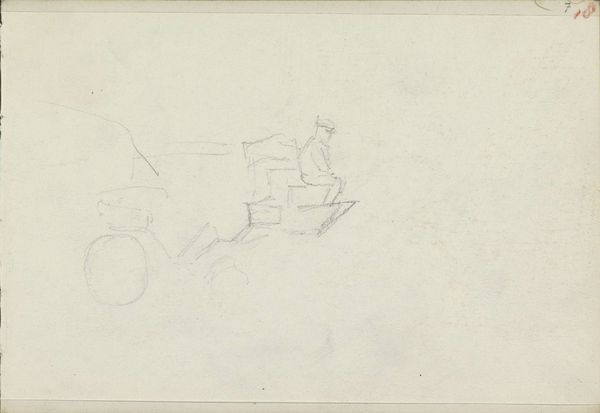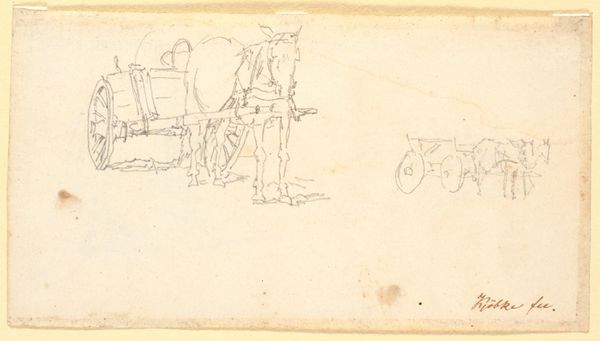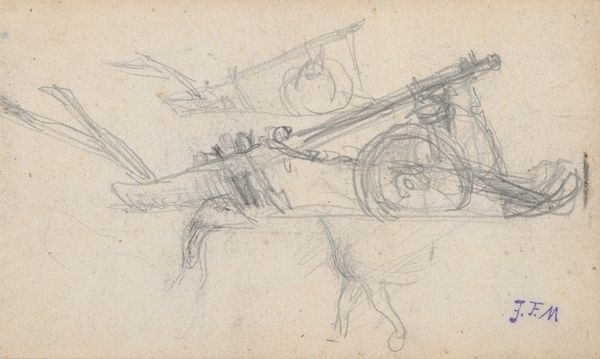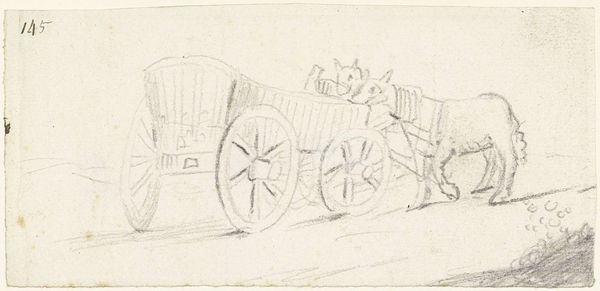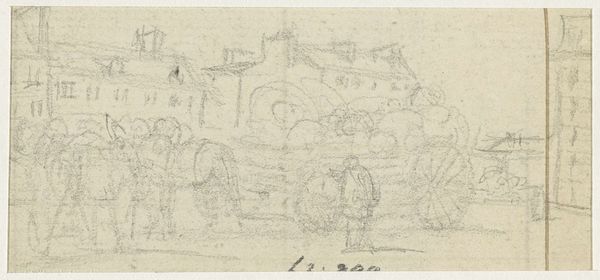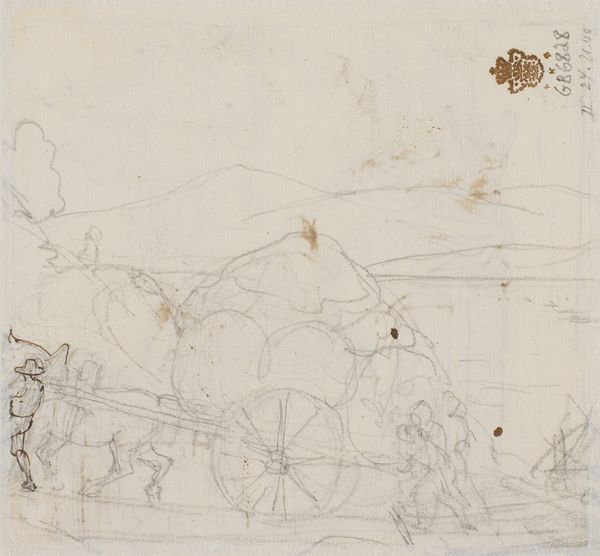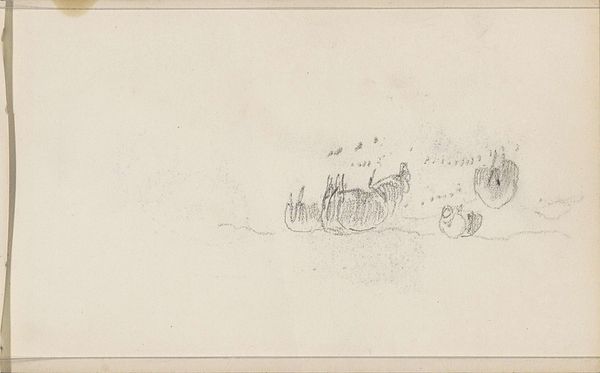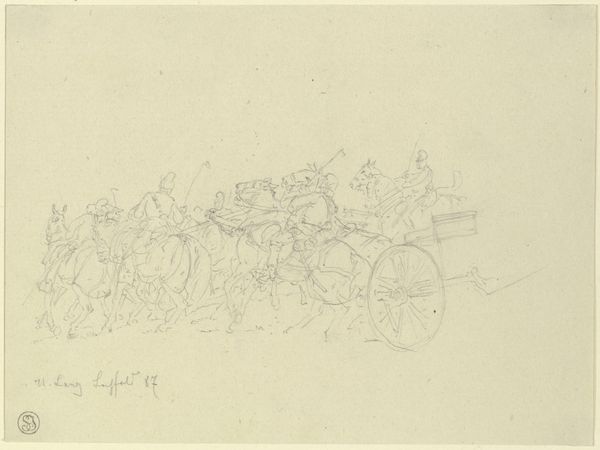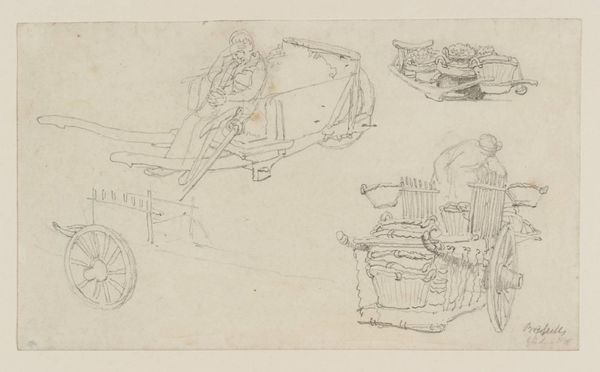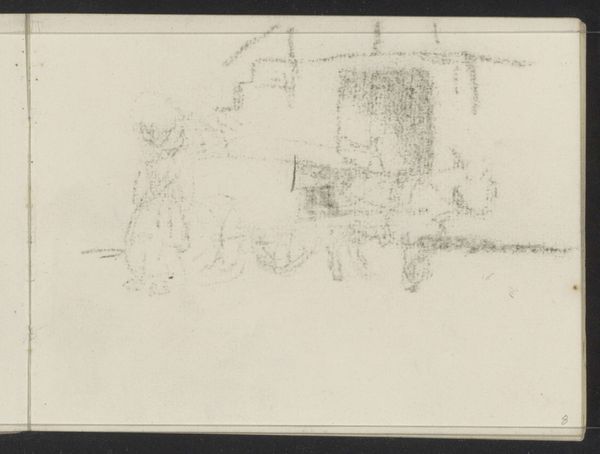
drawing, pencil
#
drawing
#
landscape
#
pencil
#
realism
Dimensions: 6 9/16 x 8 3/8 in. (16.67 x 21.27 cm)
Copyright: Public Domain
Editor: So, this is Theodore Rousseau’s “Study of a Cart” from 1825. It's a pencil drawing, and it has this unfinished quality that I find really appealing. How would you interpret this work? Curator: Well, immediately, my interest is drawn to the very deliberate act of choosing pencil, a readily available, almost ubiquitous material even in the 1820s. It speaks to the democratizing impulse within art – this isn’t oil paint for a wealthy patron, it's a study, raw and immediate, focused on the cart's materiality, its construction. What was the role of the cart in that society? Editor: It probably served many roles for everyday life. Did the artist care about the social context for the art creation or his choices of materials, or did the viewer even know anything about this when they saw his work? Curator: Absolutely, consider how landscape art at this time was evolving. The focus shifted to the working landscape and rural labor that carts facilitated and demanded. The labor and materials become very clear once you start to think that way. You can almost feel the weight of what this cart carried, what human effort and materials made that weight possible. It’s less about picturesque scenery and more about the tangible means of production and transport. Editor: I see what you mean. Thinking about the drawing this way reveals something quite profound about a very ordinary object. It shifts our perspective to the role of the working class who use such a cart, and how reliant they are upon simple raw materials, like wood or the metal in the wheels. Curator: Exactly. It prompts us to consider the socio-economic forces embedded in the simplest objects, highlighting how art can reveal the usually unseen mechanisms of society. And it asks, what kind of art would it be today? Editor: Looking at "Study of a Cart" with fresh eyes has definitely helped to transform it into more than a simple scene; I will definitely spend more time considering all aspects of an artist's choices of medium, content, and process in the future.
Comments
No comments
Be the first to comment and join the conversation on the ultimate creative platform.
